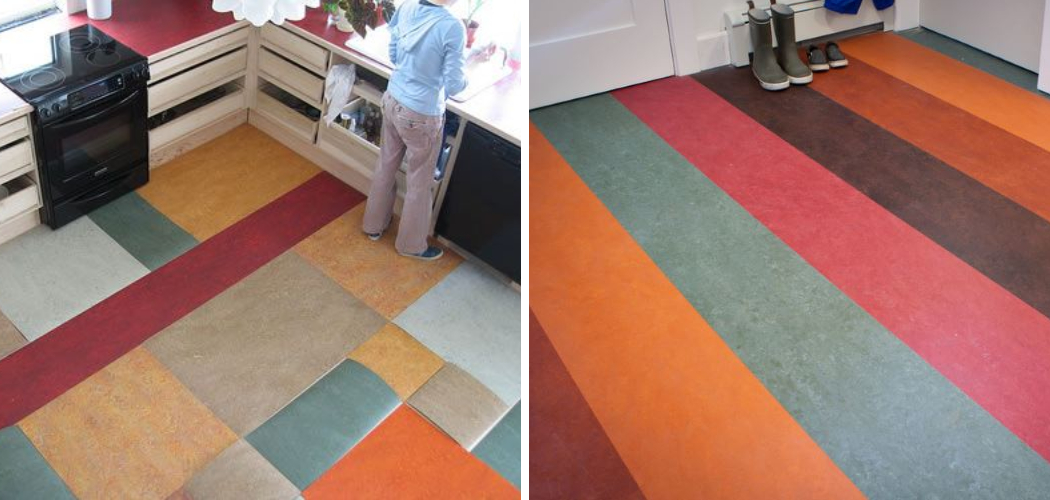Marmoleum floors, celebrated for their durability, eco-friendliness, and vibrant aesthetics, require specialized care to maintain their pristine appearance. Composed of natural ingredients such as linseed oil, wood flour, and pine rosins, cleaning Marmoleum floors involves a delicate balance to preserve their unique qualities.
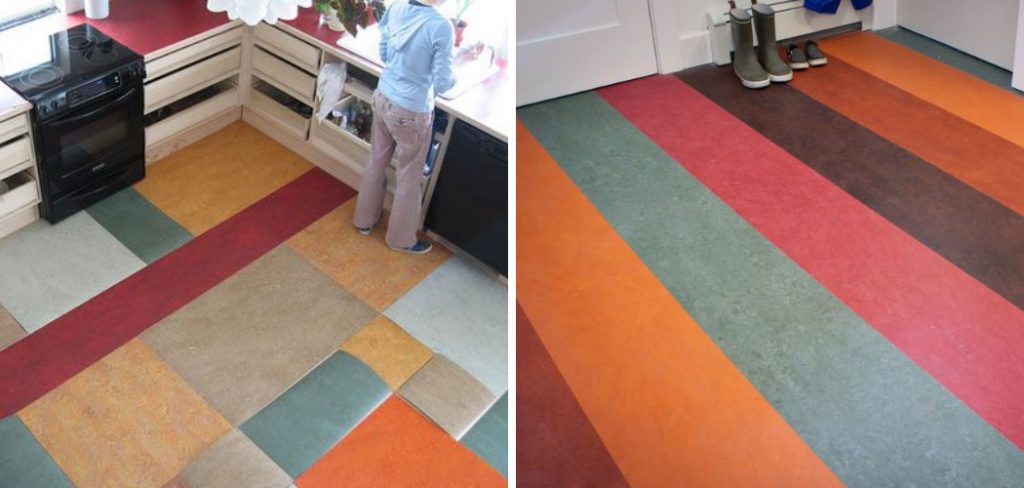
In this comprehensive guide, we will explore effective methods on “How to Clean Marmoleum Floors.” From routine maintenance to tackling stubborn stains, understanding the right cleaning techniques and products is essential to ensure longevity and uphold the distinctive charm of Marmoleum.
Whether you are a long-time owner or considering these floors for your space, mastering the art of Marmoleum floor care will contribute to a vibrant and sustainable environment. Let’s embark on a journey to discover the best practices for cleaning and maintaining the beauty of Marmoleum floors.
What is Marmoleum Flooring?
Marmoleum flooring is a natural, eco-friendly flooring material that stands out for its durability, versatility, and extensive range of colors and patterns. Predominantly made from renewable resources, including linseed oil, wood flour, jute, and natural resins, Marmoleum offers a sustainable option for those looking to minimize their environmental footprint.
It is often celebrated for its biodegradable properties, contributing to a healthier and more sustainable living environment. Furthermore, Marmoleum’s unique composition makes it antistatic and resistant to dust and dirt accumulation, making it an ideal choice for individuals with allergies or asthmatic conditions. Renowned for its robustness and ease of maintenance, Marmoleum flooring provides a practical yet stylish solution for both residential and commercial spaces.
Characteristics of Marmoleum
Marmoleum brings together a remarkable blend of features that set it apart from traditional flooring options. Its durability is unparalleled, capable of withstanding heavy foot traffic while retaining its vibrant appearance. One of the most defining characteristics of Marmoleum is its vast selection of colors and patterns, offering limitless design possibilities to complement any interior style, from classic to contemporary.
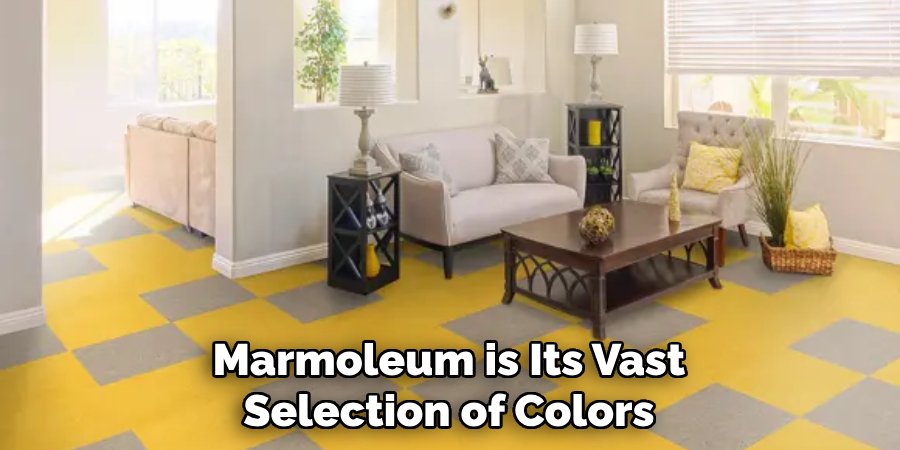
Additionally, Marmoleum is known for its adaptability across various applications, including homes, offices, healthcare facilities, and educational institutions, due to its easy-to-clean surface and resistance to bacteria growth. The floor’s comfort underfoot is yet another appealing aspect, providing a warm, cushioned feel that enhances comfort in living and working spaces.
Last but not least, Marmoleum’s composition of natural ingredients not only contributes to its environmental benefits but also ensures a healthier indoor air quality, free from harmful VOCs (Volatile Organic Compounds). These characteristics underscore Marmoleum’s status as a smart, stylish, and sustainable flooring choice for the modern world.
Benefits of Marmoleum
Marmoleum stands out in the flooring industry not just for its aesthetic appeal, but for the myriad of benefits it offers to users and the environment alike. Firstly, its composition of natural ingredients lends itself to being an eco-friendly choice, minimizing the carbon footprint associated with manufacturing and disposal. This makes it an excellent option for those looking to create a green and sustainable living or working space.
Additionally, Marmoleum’s anti-static properties greatly reduce the accumulation of dust and dirt, significantly easing the cleaning process and creating a healthier indoor environment. This is particularly beneficial for individuals with allergies or respiratory issues, as it contributes to improved indoor air quality. Another key advantage is Marmoleum’s durability. Engineered to last, it can withstand high traffic areas without compromising its visual integrity, making it a cost-effective solution over time.
The versatility in design and color also allows for creative freedom in interior decorating, enabling homeowners and designers to personalize spaces to their unique tastes. Lastly, the thermal conductivity of Marmoleum makes it compatible with underfloor heating systems, providing additional comfort and energy efficiency. Collectively, these benefits position Marmoleum as a premier choice for anyone seeking a beautiful, durable, and sustainable flooring option.
Common Types and Styles of Marmoleum Flooring
Marmoleum flooring is renowned for its versatility, offering numerous types and styles to cater to various aesthetic preferences and functional needs. This flexibility ensures that Marmoleum can seamlessly integrate into any design scheme, from minimalist modern to richly traditional. The primary types of Marmoleum flooring include sheet, tile, and click.
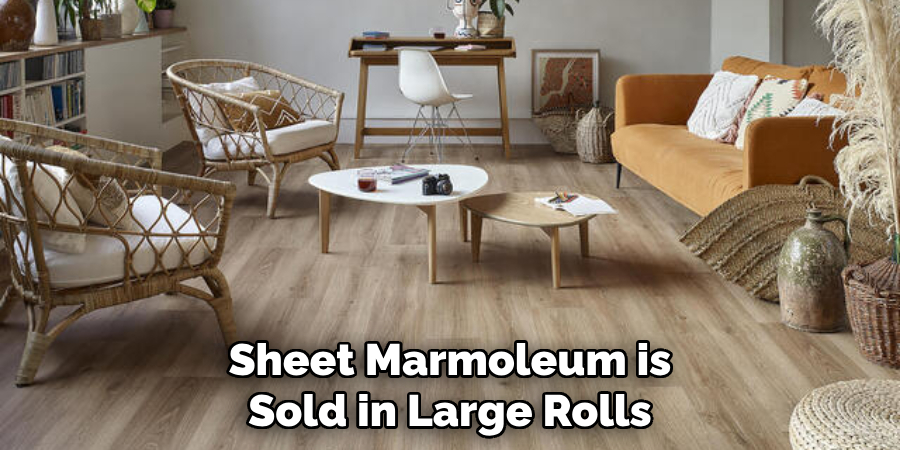
Sheet Marmoleum is sold in large rolls and is an excellent choice for expansive, uninterrupted floor coverings. It’s particularly beneficial in healthcare and educational settings where hygiene and ease of cleaning are paramount, as it allows for a seamless installation with minimal joints.
Marmoleum Tiles provide a modular option, perfect for custom designs and patterns. Available in a wide range of colors and sizes, these tiles can be mixed and matched to create unique, vibrant floor designs that express individual style and flair.
Click Marmoleum is a user-friendly, floating floor system that snaps together without the need for adhesives. It combines the natural beauty and durability of Marmoleum with an easy installation process, making it an ideal choice for DIY enthusiasts.
In terms of styles, Marmoleum boasts a rich palette of colors, from understated neutrals to bright, bold hues. The patterns range from solid colors that provide a uniform look to intricate marbled effects, striated designs, and even graphic prints that make a statement. These diverse options allow Marmoleum floors to adapt to any interior environment, enhancing the space with its natural, sustainable beauty.
10 Methods How to Clean Marmoleum Floors
1. Regular Sweeping and Vacuuming:
Begin your Marmoleum floor cleaning routine with regular sweeping or vacuuming using a soft-bristle broom or a vacuum cleaner with a soft brush attachment. This helps remove loose dirt and prevents scratches.
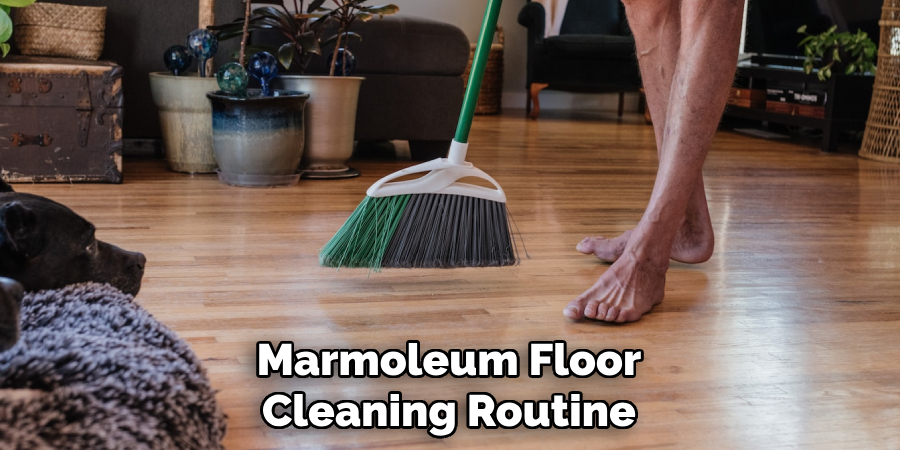
In addition to sweeping or vacuuming, it is also important to spot clean any spills or stains as soon as they occur. This prevents the liquid from seeping into the porous surface of Marmoleum and causing permanent damage. However, avoid using excessive water or cleaning products when spot cleaning to prevent any discoloration.
2. Damp Mopping with Mild Soap:
For routine cleaning, damp mop the Marmoleum floor using a well-wrung mop and a mild pH-neutral soap or a specially formulated Marmoleum cleaner. Avoid using harsh chemicals or abrasive cleaners that can damage the floor’s surface. Rinse the mop frequently and change out the cleaning solution as needed to prevent streaking. However, if there are stubborn stains or scuffs on the floor, you may need to use a stronger cleaning solution.
It is important to note that Marmoleum floors are water-resistant but not waterproof. Therefore, it is essential to avoid excessive moisture when damp mopping. Excess moisture can penetrate the seams of the floor and cause damage over time. To prevent this, make sure to wring out the mop thoroughly and avoid leaving standing water on the floor. Once you have finished damp mopping, use a dry towel or rag to wipe up any remaining water.
3. Addressing Spills Immediately:
Accidents happen, and spills are inevitable. Address spills promptly by blotting them with a clean, damp cloth. Avoid letting liquids sit on the floor for an extended period, as this can potentially stain or damage the Marmoleum. If the spill is a sticky substance, such as gum or wax, gently scrape it off with a plastic tool. Do not use sharp objects that may scratch or gouge the surface.
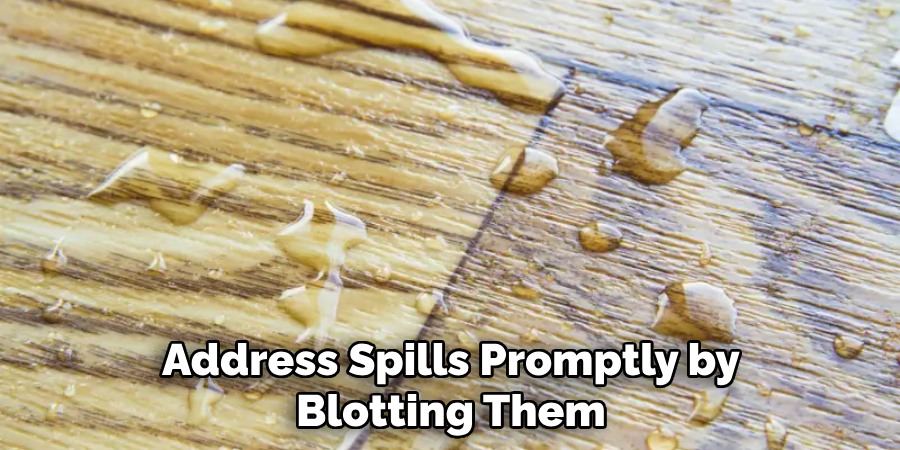
Additionally, certain spills may require special treatment. For instance, if you spill acidic substances like vinegar or lemon juice on your Marmoleum floor, immediately clean it with a mild soap and water solution to prevent any potential damage. If you accidentally spill oil or grease, sprinkle some baking soda on the affected area and let it sit for a few minutes before wiping it away with a clean cloth.
It is crucial to address spills immediately as they can not only cause discoloration or damage but also pose a safety hazard by making the floor slippery. In case of any stubborn stains or spills that are difficult to remove, it is best to consult a professional cleaning service for proper treatment and maintenance of your Marmoleum floor.
4. Deep Cleaning with Marmoleum Cleaner:
Periodically, perform a deep cleaning using a Marmoleum floor cleaner. Follow the manufacturer’s instructions for dilution ratios and application methods. This helps remove built-up grime and restores the floor’s original luster. However, avoid using excessive amounts of water as it can damage the flooring.
Once the cleaning solution has been evenly applied, use a soft-bristled brush or mop to gently scrub the surface. This helps loosen any tough stains or dirt buildup. Avoid using harsh chemicals or abrasives as they can cause discoloration and scratches on the Marmoleum flooring.
After scrubbing, rinse the floor thoroughly with clean water. Make sure to remove all traces of the cleaning solution as any residue left behind can attract dirt and make your floor look dull.
To dry the floor, use a soft, absorbent cloth or mop to wipe away excess moisture. Avoid using a steam cleaner or excessive heat as it can cause damage to the Marmoleum flooring.
5. Homemade Vinegar Solution for Stains:
For stubborn stains on Marmoleum floors, create a gentle cleaning solution using a mixture of white vinegar and water. Apply the solution to the stain, let it sit for a few minutes, and then wipe it away with a clean, damp cloth. Repeat if necessary until the stain is completely lifted.
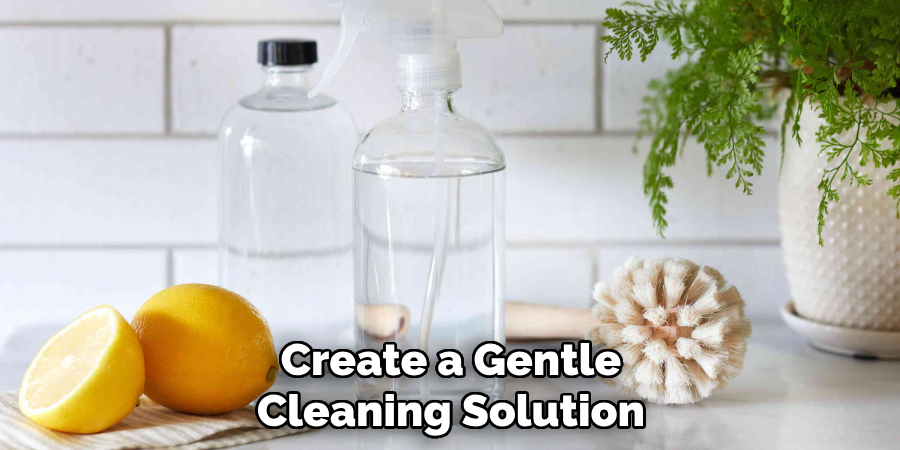
Vinegar is a natural and safe alternative to harsh chemical cleaners, making it an ideal choice for cleaning Marmoleum floors. It not only removes stains effectively but also helps to disinfect and deodorize the surface.
To make the vinegar solution, mix equal parts of white vinegar and water in a spray bottle. You can also add a few drops of essential oils for a pleasant scent. Shake the bottle to mix the solution well before use.
Some other benefits of using vinegar for cleaning Marmoleum floors include its low cost, eco-friendliness, and versatility. It can also help to prevent streaks and residue that may occur with some commercial cleaners.
6. Avoid Excessive Water:
Marmoleum is water-resistant, but excessive moisture can still damage the floor over time. When mopping, ensure the mop is only damp, not soaked. Wipe away excess water promptly and never leave standing water on the floor. In case of spills, clean them up immediately to prevent water from seeping into seams and causing damage.
Adding a protective coating such as wax or sealant can also help prevent excessive moisture from damaging the floor. These coatings act as a barrier against water and can provide an extra layer of protection for your Marmoleum flooring.
Aside from regular cleaning, it is important to also address any leaks or issues with humidity in the room where the Marmoleum flooring is installed. Excessive moisture in the air can contribute to water damage on your floor, so make sure to properly address these issues to avoid further problems.
Overall, maintaining a balanced level of moisture and addressing any spills or leaks promptly can help preserve the longevity of your Marmoleum flooring. With proper care and maintenance, your Marmoleum floor can last for many years to come.
7. Use pH-Neutral Cleaners:
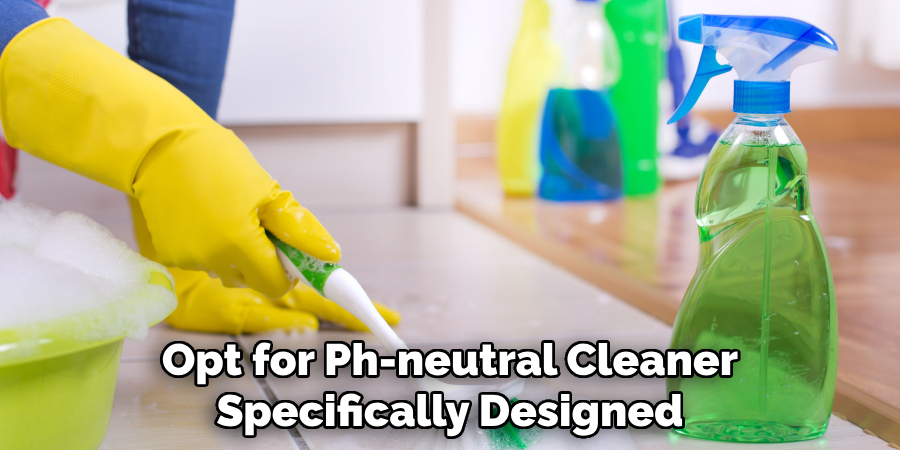
When choosing cleaning products, opt for pH-neutral cleaners specifically designed for Marmoleum floors. These cleaners are gentle on the surface, preventing any adverse reactions or damage to the floor’s finish. Avoid using harsh chemicals such as bleach, ammonia, or vinegar, as they can strip away the protective layer of the Marmoleum and cause discoloration.
pH-neutral cleaners are also environmentally friendly and safer for your family and pets. They do not emit harmful fumes like traditional cleaners, making them a healthier option for your home. Additionally, they are biodegradable and do not leave behind toxic residues on your floor.
It is essential to follow the manufacturer’s instructions when using pH-neutral cleaners. Dilute them according to the recommended ratio and avoid using too much product, as this can lead to a dull or sticky residue on your Marmoleum floors.
8. Prevent Scratches:
Place protective pads under furniture legs to prevent scratches when moving or rearranging furniture. Additionally, avoid dragging heavy or sharp objects across the Marmoleum surface to maintain its smooth appearance.
Although Marmoleum is a durable flooring option, scratches and scuffs can still occur if proper precautions are not taken. However, if scratches do occur, they can be easily removed with a gentle scrub using a neutral pH cleaner and a soft cloth. Regularly sweeping or vacuuming the floor will also help prevent scratches from dirt and debris.
9. Avoid Wax or Polish:
Marmoleum has a factory-applied finish that doesn’t require waxing or polishing. In fact, applying wax or polish can create a slippery surface and may damage the floor’s natural qualities. Stick to the recommended cleaning methods for optimal results.
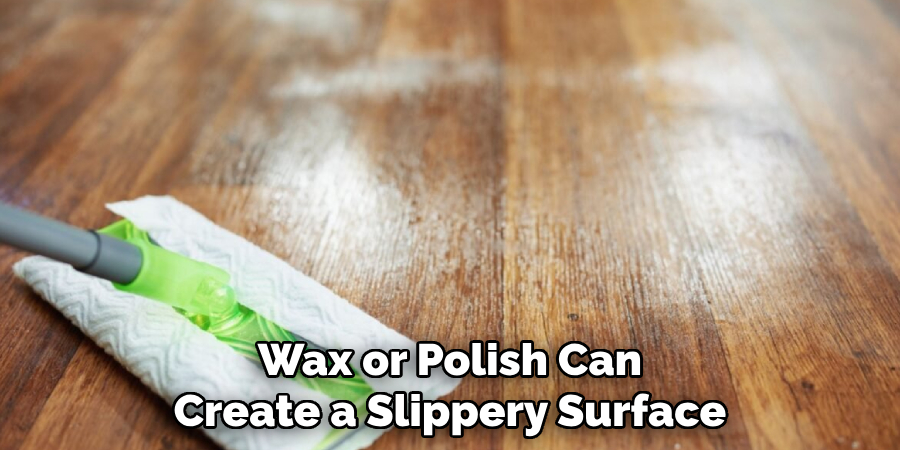
Wax or polish is not only unnecessary for Marmoleum flooring, but it can also be detrimental to the floor’s quality. The factory-applied finish provides a protective layer that does not require any additional treatments. Applying wax or polish on top of this finish can create an uneven and slippery surface, making it dangerous to walk on.
Moreover, some waxes or polishes may contain chemicals that can damage the natural properties of Marmoleum, such as its antimicrobial and hypoallergenic qualities. Stick to the recommended cleaning methods for optimum results and avoid using wax or polish on your Marmoleum flooring.
10. Regular Maintenance of Entrance Mats:
Place entrance mats at doorways to trap dirt and prevent it from being tracked onto the Marmoleum floor. Regularly clean and shake out the mats to ensure their effectiveness in minimizing the amount of dirt brought indoors. Additionally, consider rotating the mats periodically to distribute wear evenly.
Regularly sweeping or vacuuming your Marmoleum floor will help remove any loose dirt and debris that may have been tracked onto it. This will not only keep your floor looking clean, but it will also prevent any scratches or damage caused by abrasive particles.
For tougher stains and spills, spot cleaning with a mild detergent and warm water solution is recommended. Avoid using harsh chemicals or abrasive cleaners as they can damage the protective layer of the Marmoleum floor.
To maintain the shine and luster of your Marmoleum floor, it is important to periodically buff and polish it. This will help restore any minor scratches and scuff marks, giving your floor a renewed shine.
Conclusion
In conclusion, maintaining Marmoleum floors requires a thoughtful approach to cleaning and maintenance. By understanding the composition of Marmoleum and following proper cleaning techniques outlined, homeowners can effectively preserve the natural beauty and durability of their floors.
Regular sweeping or vacuuming to remove loose dirt and dust, followed by gentle mopping with pH-neutral cleaner and warm water, helps keep Marmoleum floors clean and free from residue. Addressing stains promptly and avoiding harsh chemicals are essential practices to prevent damage to the surface.
Additionally, considering professional cleaning services for deep cleaning and restoration can rejuvenate Marmoleum floors effectively. Hopefully, this article gave you some helpful tips about how to clean marmoleum floors successfully, so now that you have the proper knowledge on how to get the job done, why not give it a try today?
